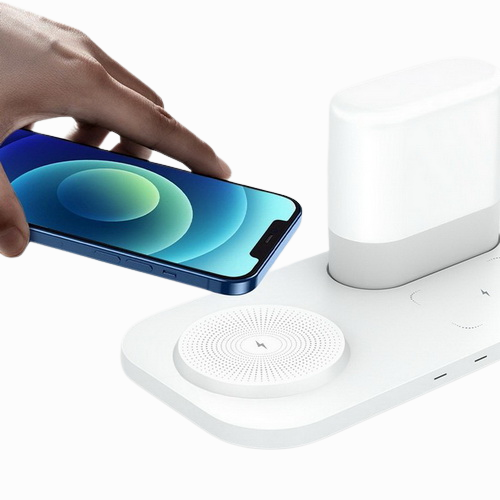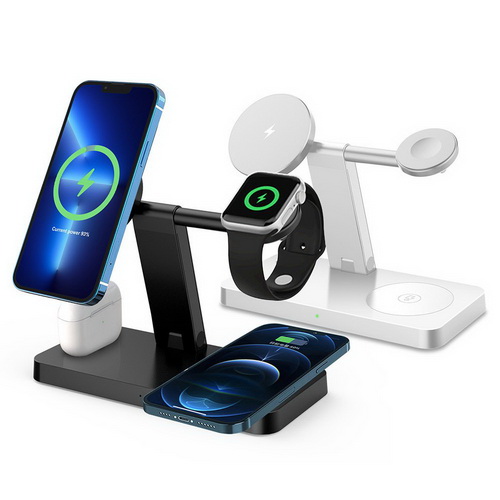The output power of a chargeur sans fil depends on a combination of factors. Here are some key factors:

Transmitting power
Definition and impact: The transmitter power is a key factor affecting the output power of a wireless charger. In general, the greater the power at the transmitting end, the more electrical energy can be transmitted to the receiving device, and thus the faster the charging speed.
Trade-offs and choices: However, too much power can also cause the charger to heat up, so when choosing a wireless charger, you need to weigh the size of the transmitter power according to the required charging speed and safety.
Distance between receiving end and transmitting end
Distance and efficiency: When the receiving end is too far from the transmitting end, the charging rate will be significantly reduced due to the magnetic field leakage and the coupling efficiency, which will affect the output power of the charger.
Optimization recommendation: In order to get faster charging speed, make sure that the distance between the transmitter and the receiver of the charger is as close as possible.
Charger type and standard
Type difference: The output power of different types of wireless chargers is different. For example, the Qi standard wireless charger generally has a power between 5W and 15W, while the latest Qi 1.2 standard can provide up to 45W of power.
Standard selection: When choosing a charger, you need to choose the right type and standard according to your needs to ensure that you get the desired output power.
Power output capability of charging head
Definition and impact: A charging head (i.e. a power adapter) is a device that converts alternating current into direct current suitable for use in wireless chargers. Its power output capacity directly affects the output power of the wireless charger.
Matching suggestion: In order to ensure that the output power of the wireless charger is fully utilized, it is necessary to select a charging head that matches the power of the charger. If the power output capacity of the charging head is insufficient, the output power of the wireless charger will be limited.
Other factors
Coil parameters and design: The coil parameters of the wireless charger (such as inductance, resistance) and the quality of the design scheme will also affect the output power. Optimizing coil parameters and design scheme can improve charging efficiency.
System loss: There are various losses in the wireless charging system, such as transistor loss, switching power loss, etc., which will reduce the output power. These losses can be reduced by optimizing circuit design and selecting low-loss components.
Ambient temperature and heat dissipation: The output power of the wireless charger may also be affected by ambient temperature and heat dissipation conditions. The output power of the charger may be reduced in high temperature environments, so it is necessary to ensure that the charger has good heat dissipation performance.
In summary, the output power of the wireless charger depends on the transmitter power, the distance between the receiver and the transmitter, the charger type and standard, the power output capacity of the charging head, and other factors. When choosing and using a wireless charger, these factors need to be taken into account to ensure the desired charging effect.



